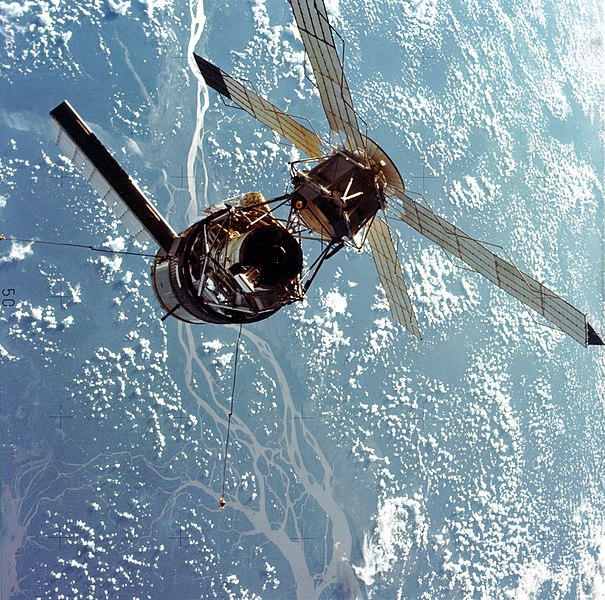Been a while since I wrote about a space related topic, hasn’t it? Well, I couldn’t let today go by at all without at least covering the sad end of one of my favorite parts of space history – Skylab.
Today, July 11th, marks 40 years since Skylab re-entered the Earth’s atmosphere over the Indian Ocean, a somewhat sad end to an amazing machine.
Launched in May of 1973, Skylab had 3 three-person crews work on it from May of 73 until February of 74. It was America’s first (and technically only) Space Station and was made from a converted S-IVB rocket stage! The station was the payload of the final Saturn V launch, and was designed only to really be used for that year. Period.
It’s actually amazing the station was able to be used at all – it had suffered damage during launch which effectively crippled it. Amazingly, the first crew to the station was able to conduct some repairs to make the station livable, and the second crew improved on these repairs. While not perfect, Skylab was usable.

Then came the end of the Skylab program, in early 74. The station had about half of the resources (oxygen, water, etc) still available. The final crew left Skylab in a state where, in theory, another flight could go to it and continue operations. While the final Apollo CSM would be used for the Apollo-Soyuz test project in 1975, the design and development of the Space Shuttle was well underway. An idea was proposed — why not use the Space Shuttle in conjunction with Skylab in some way?
The plan, in very simple form, was this — on an early Shuttle flight the vehicle would rendezvous with Skylab and a remotely operated vehicle would be deployed to actually “dock” with the station. This smaller vehicle would boost Skylab into a higher orbit, keeping it in space that much longer for another Shuttle mission to begin the process of upgrading the station.
Keep in mind Skylab had no ability to boost its own orbit — it relied on the 3 previous Apollo CSM’s and their engines to raise its orbit, a requirement since all near Earth orbits naturally decay due to the thin traces of the planets atmosphere still present at those altitudes. Skylab was thought to have, at the end of the program, been pushed into an orbit that would keep it in space until maybe 1980 or 81 — more than long enough for a Shuttle boost mission along the original planned timetable of the Space Shuttle being operational in 1978 or 79.
A problem, however, presented itself though the mid to late 70’s — the Sun. Increased solar activity brought about a bit of an expansion of our planets upper atmosphere, which meant more drag on the massive space station. This resulted in the stations orbit decaying faster than expected, and by 1979 it was a sure thing that the station would be lost.

While Skylab didn’t have engines to maneuver itself, it could change it’s orientation in space — the direction it was pointed. Thanks to it’s rather unique shape, those in control of the space station who were originally hoping to reactivate it for future crews instead were changing its position as it orbited trying to control its inevitable descent. A 77,000 kg space station is, obviously, not something you want just crashing wherever — while most of it would burn up in the atmosphere some larger, more structurally sound components certainly would make it to the surface, and while odds were good that debris would hit the ocean the teams at NASA wanted to make sure it would.
They almost had it right — Skylab would re-enter on July 11th, 1979 over the Indian Ocean. Still, some components of the station would land in western Australia. That was it — Skylab was no more, and the Space Shuttle, still just under 2 years away from it’s first launch, wouldn’t see activity with a Space Station until the mid 90’s and the Russian (formerly Soviet) Space Station MIR.
Skylab was, to me, one hell of a machine. An amazing re-use of existing components and an incredible example of the ability for humans in space being able to repair damage to equipment on a large scale.
I’ve had the pleasure back in October of 2018 of visiting the U.S. Space and Rocket Center in Huntsville, Alabama, and being able to enter the Skylab training mock up as well as see what remains of one of the Oxygen tanks which was once on the station. Needless to say, I enjoyed myself there (although I never did write about it — I may do that in the future) and hope to visit again when they have finished the Skylab exhibit.
Sorry, I went off on a bit of a ramble there. I hope you enjoyed reading about the sad end of America’s first Space Station. One thing is certain — you can’t say we didn’t want to try to continue to use it. Time just got the better of us, in the end. These things happen.
